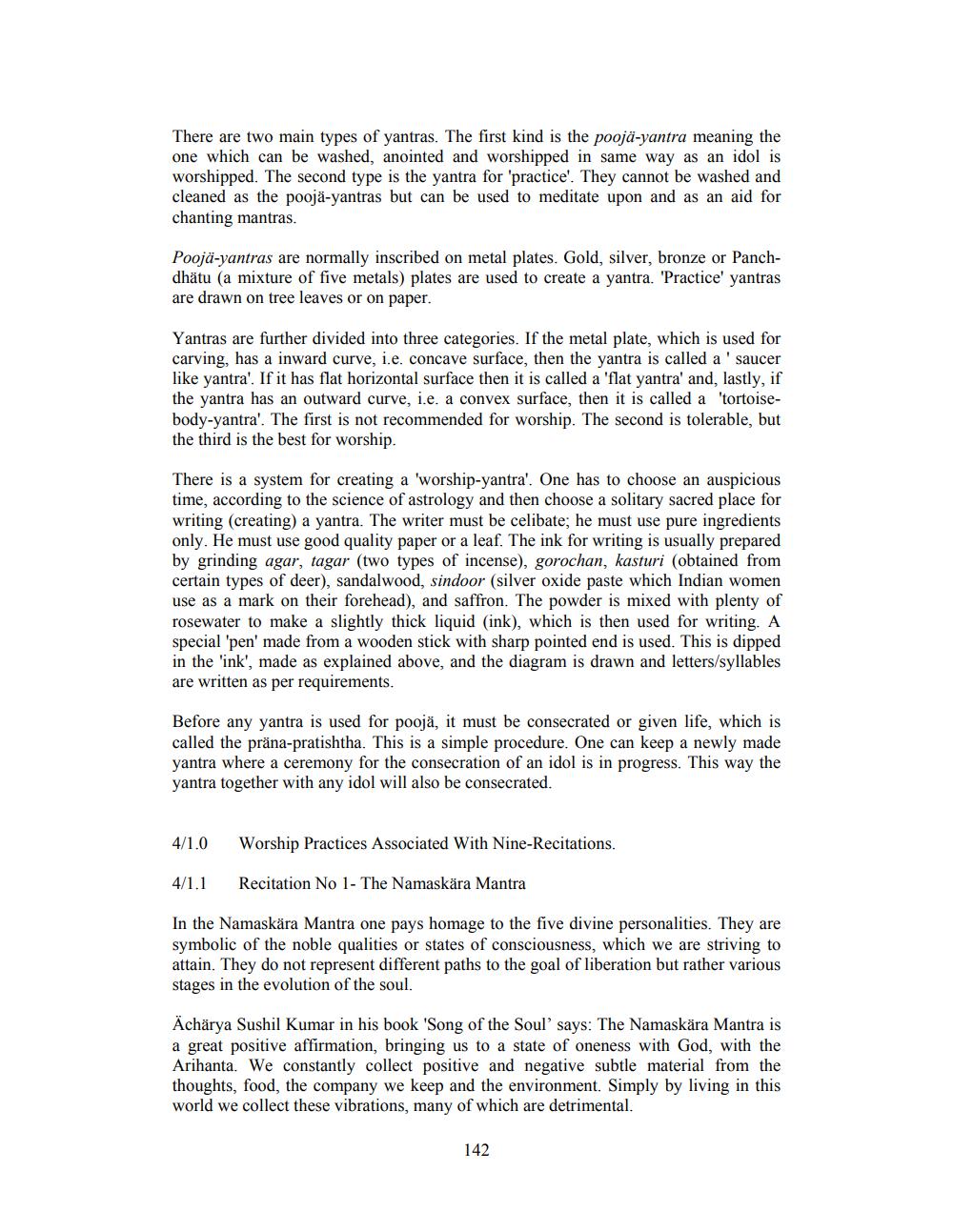________________
There are two main types of yantras. The first kind is the poojä-yantra meaning the one which can be washed, anointed and worshipped in same way as an idol is worshipped. The second type is the yantra for 'practice'. They cannot be washed and cleaned as the poojä-yantras but can be used to meditate upon and as an aid for chanting mantras.
practice. They mae way as an ide the
Poojä-yantras are normally inscribed on metal plates. Gold, silver, bronze or Panchdhätu (a mixture of five metals) plates are used to create a yantra. 'Practice' yantras are drawn on tree leaves or on paper.
Yantras are further divided into three categories. If the metal plate, which is used for carving, has a inward curve, i.e. concave surface, then the yantra is called a 'saucer like yantra'. If it has flat horizontal surface then it is called a 'flat yantra' and, lastly, if the yantra has an outward curve, i.e. a convex surface, then it is called a 'tortoisebody-yantra'. The first is not recommended for worship. The second is tolerable, but the third is the best for worship.
There is a system for creating a 'worship-yantra'. One has to choose an auspicious time, according to the science of astrology and then choose a solitary sacred place for writing (creating) a yantra. The writer must be celibate; he must use pure ingredients only. He must use good quality paper or a leaf. The ink for writing is usually prepared by grinding agar, tagar (two types of incense), gorochan, kasturi (obtained from certain types of deer), sandalwood, sindoor (silver oxide paste which Indian women use as a mark on their forehead), and saffron. The powder is mixed with plenty of rosewater to make a slightly thick liquid (ink), which is then used for writing. A special 'pen' made from a wooden stick with sharp pointed end is used. This is dipped in the link', made as explained above, and the diagram is drawn and letters/syllables are written as per requirements.
Before any yantra is used for poojä, it must be consecrated or given life, which is called the präna-pratishtha. This is a simple procedure. One can keep a newly made yantra where a ceremony for the consecration of an idol is in progress. This way the yantra together with any idol will also be consecrated.
4/1.0
Worship Practices Associated With Nine-Recitations.
4/1.1
Recitation No 1- The Namaskära Mantra
In the Namaskära Mantra one pays homage to the five divine personalities. They are symbolic of the noble qualities or states of consciousness, which we are striving to attain. They do not represent different paths to the goal of liberation but rather various stages in the evolution of the soul.
Ächärya Sushil Kumar in his book 'Song of the Soul' says: The Namaskära Mantra is a great positive affirmation, bringing us to a state of oneness with God, with the Arihanta. We constantly collect positive and negative subtle material from the thoughts, food, the company we keep and the environment. Simply by living in this world we collect these vibrations, many of which are detrimental.
142




